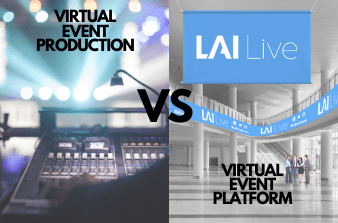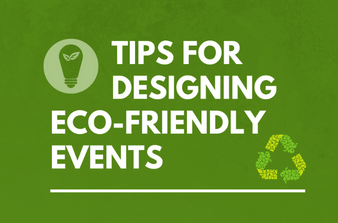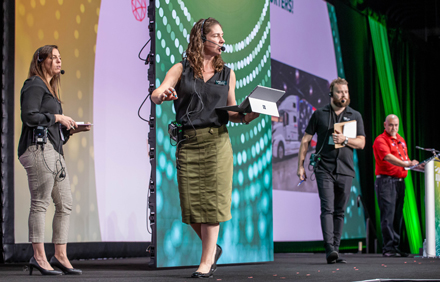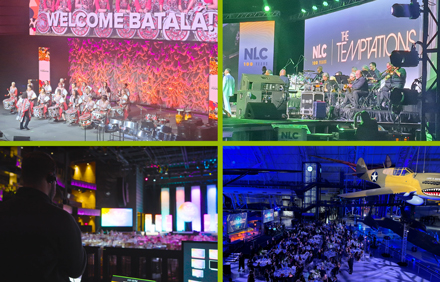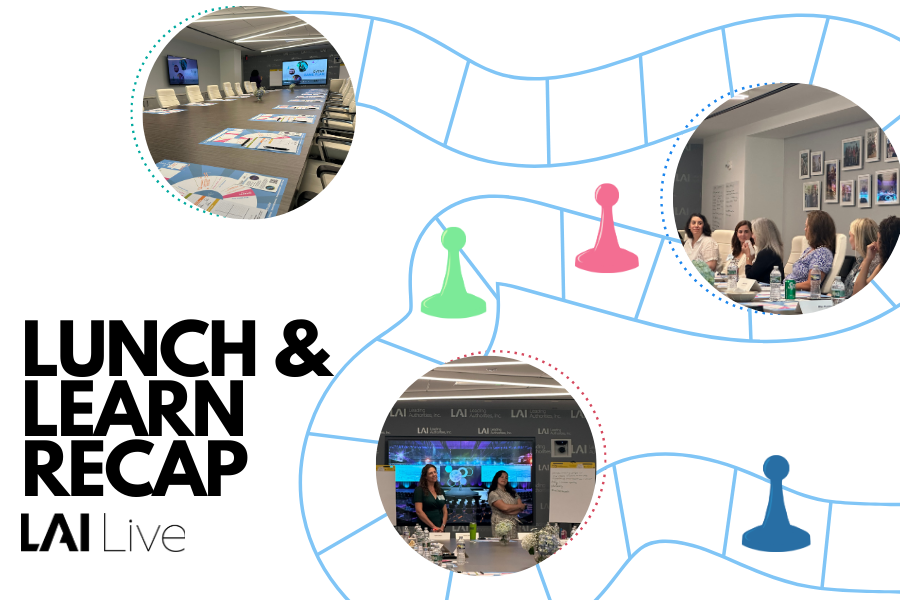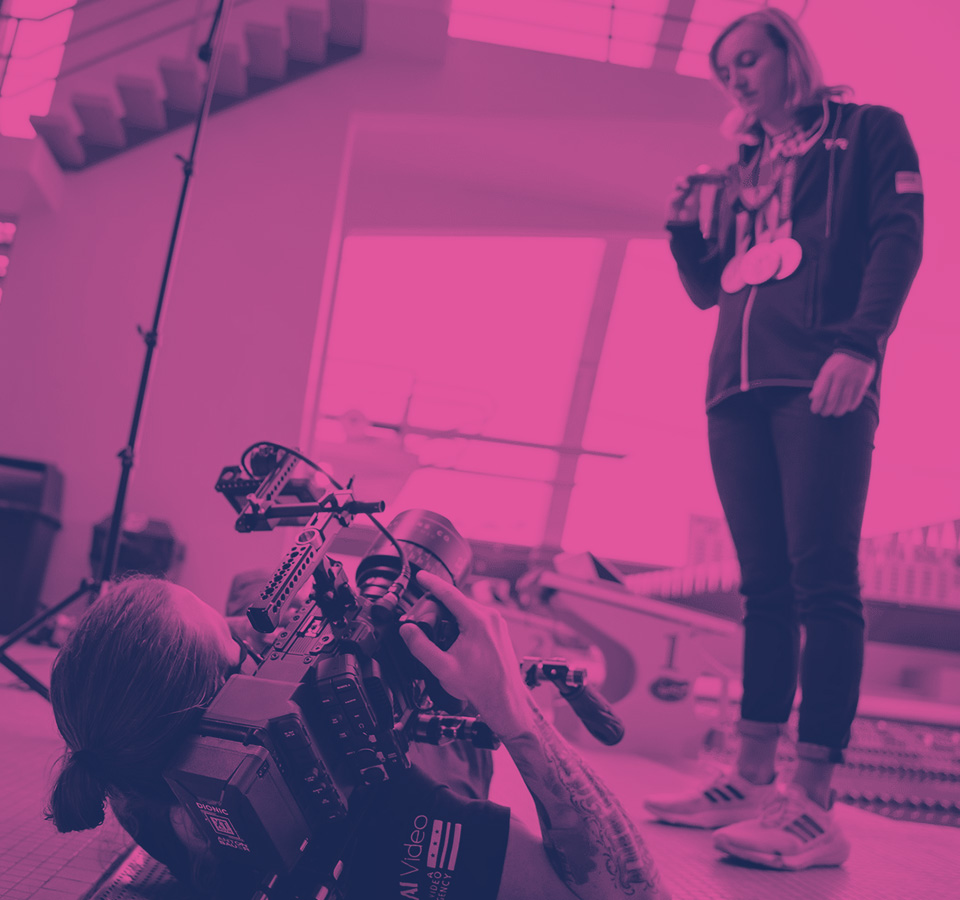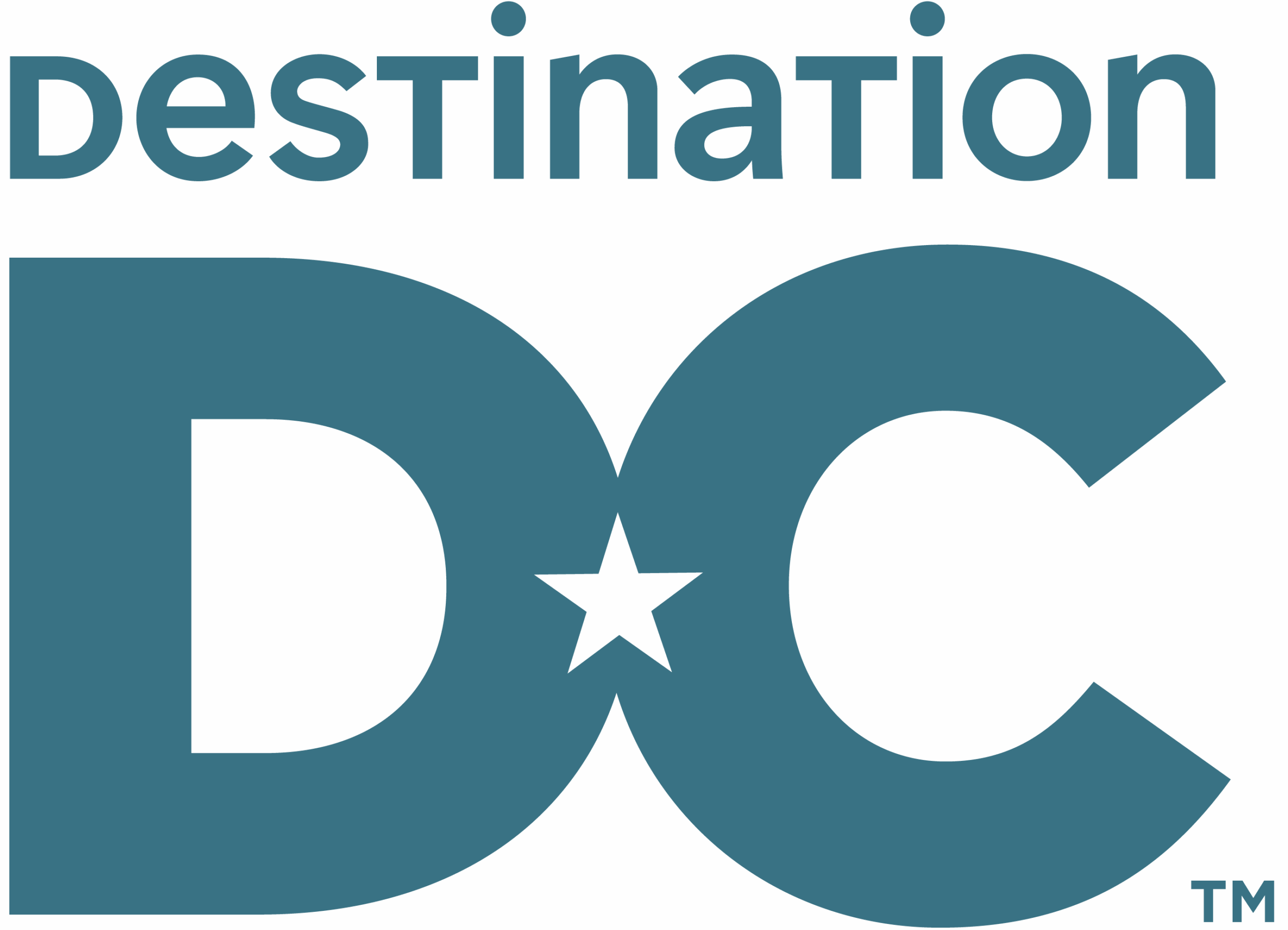From researching to construction to fine-tuning, being thoughtful and strategic when planning out your next event and the amount of time you’ll need is crucial to its success. And producing an impactful experience in a virtual environment, whether partially or fully, requires just as much (if not more!) time as an in-person program.
If you’re feeling rushed or don’t even know where to start, our seasoned team of virtual event producers is here to help. We have put together a quick glimpse of the time you should be setting aside for each phase of planning, and the steps involved for each.
- Phase 1 (Weeks 1-4): Research & Contract
- Phase 2 (Weeks 5-8): Kick-Off & Design
- Phase 3 (Weeks 9-12): Event Build
- Phase 4 (Weeks 13-13): Rehearsals & Quality Assurance
- Phase 5 (Weeks 15+): Show Time!
- Post-Event: Take a Deep Breath!
- The Complete Picture: Your Virtual Event Planning Roadmap
Keep reading for a breakdown of each step in our virtual event planning roadmap! And be sure to follow along using the below icon legend.

Phase 1: Research & Contract (Weeks 1-4)
It’s time to begin planning your virtual event! But where to start? Here is what you should be doing within the first four weeks of your planning process.
- Determine metrics for a successful virtual event: What goals are you trying to achieve with this virtual event, and what will define success? (Remember: These may look different than past metrics/goals you’ve traditionally used for in-person events.) Are you looking to engage with new customers, create a sense of community with your members, or position your organization as thought leader within your space? Answering these questions will help determine the metrics that will define success (registrations, time in sessions, virtual connections made, etc.), and therefore the areas you should invest in to optimize your ROI.
- Strategize overall agenda & content/speaker needs: How will you be engaging your attendees in a virtual setting? Use this step as a way to outline the experience you’d like your your attendees to have, and the content and speakers you need to support that agenda. For example, will you need to deliver an inspiring general session? Will you bake in moderated networking breaks and activities or add a virtual entertainment element? Or create a virtual exhibit hall? These agenda needs will help narrow down your search when selecting the best platform, talent, and partners for your event.
- Research & platform selection: Now that you understand the experience you’d like to create, it’s time to research and select a platform that works best for your needs. With the seemingly endless virtual event platforms out there, this step can feel quite daunting and overwhelming. Here are some tips we recommend when choosing virtual event platforms. And of course, if you work with a virtual event producer, they can help advise you and provide their top recommendations as well.
- Select production company for livestream programming. As a meeting organizer, you understand the importance of delivering a seamless, broadcast-quality event experience. A virtual event producer will help you navigate the entire process from start to finish – from concept to execution. Not only do they help with a majority of the technical aspects of your meeting, but they will also partner with you to develop engaging ideas, enact creative solutions, and deliver an impressive end-result – taking the anxieties out of going virtual. Learn more about what a virtual event producer does to enhance a virtual event experience.
Phase 2: Kick-Off & Design (Weeks 5-8)
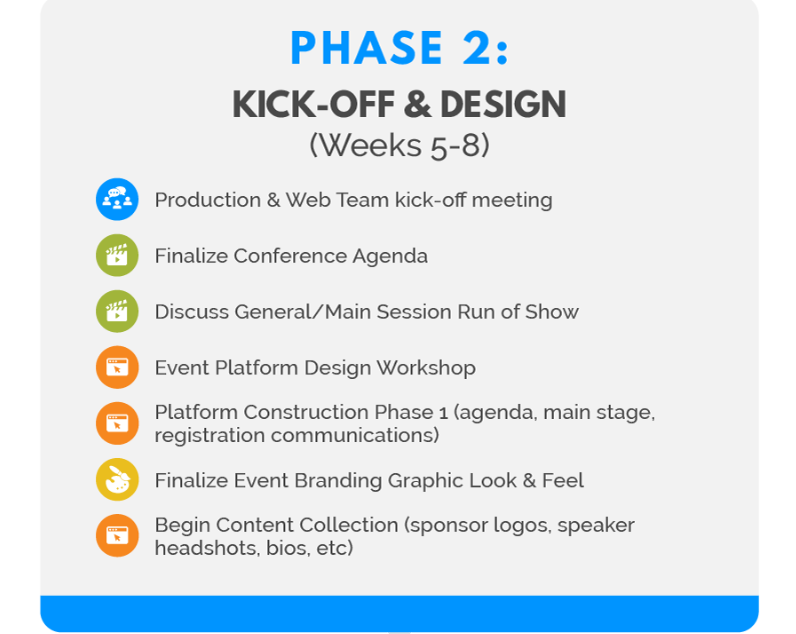
You’ve done your research, found your partners, and are ready to kick-off and design your event! Here are some of the main steps to take within the next 5-8 weeks.
- Production & web team kick-off meeting: A bit self-explanatory, but a very important step in teeing up your event for success. This is where you’ll share your vision with your production and web partners so they can start building your desired virtual event experience.
- Finalize conference agenda: Take your strategy from Phase 1 and put it into action! This will help to determine how to break down your event days, the sessions you’ll need, and how the platform should be built out in order to accommodate these goals.
- Discuss general/main session run-of-show: If you’re planning a show-stopping virtual general session, start discussing your vision now to give you and your production team ample time to develop creative ideas, source solutions, and build out a program that wows your attendees.
- Event platform design workshop: Brainstorm your event platform design ideas with your partners to determine the look & feel of your meeting, the themes you’d like to get across, and how to translate this look & feel to the platform and virtual experience. For example, at LAI Live we offer a Virtual Event Consultation that helps our clients identify the most effective ways to translate their in-person meeting to the virtual arena and the most impactful ways to engage with their audiences through the virtual platform.
- Platform construction Phase 1: Build out the core elements of your event onto the platform, including the agenda, main stage, and registration communications. These pieces are integral in the launch of your event and should be tackled first in order to go live with your promotions.
- Finalize event branding graphic look & feel: After you’ve brainstormed your look & feel options, select the best fitting one for your event. This will determine the design for all of your event elements – conference logo, platform customization, programming graphics, lower-thirds, transitions, slides, and more – so is important to finalize in phase 2 of your event planning. See some ways to incorporate graphics in your virtual event.
- Begin content collection: Start collecting all the content you’ll need to build out your virtual event. This can include sponsor logos, speaker headshots and bios, and more. Obtaining assets from third parties often has a longer turnaround time, so worth starting early!
Phase 3: Event Build (Weeks 9-12)
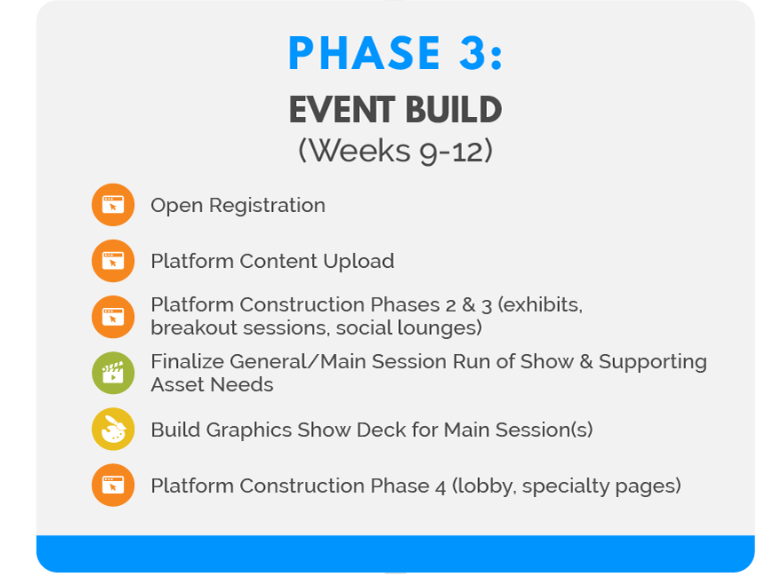
After you’ve determined the design strategy, it’s time to execute! Weeks 9-12 of your event planning process should be dedicated to the below components of the event build.
- Open registration: This is the time where you should have registration built and ready to launch and allow your group to sign up for the event. Planning to open up registration in this phase allows ample time to get folks into the event, and therefore allows you to better estimate your audience size and plan your event accordingly.
- Platform content upload: Upload all content-related items into the platform that are ready to go. This should include your design elements, pre-recorded content pieces, supporting assets, and attachments. Upload as much as you can ahead of time to be sure the platform is all set for showtime.
- Platform construction Phase 2&3: This is dedicated to the supporting agenda items that need to be built out in the platform. This can include exhibits, breakout sessions, social lounges, and more components that are critical to the overall event experience and require some time to build and customize.
- Finalize general/main session run of show & supporting assets needed: Put your ideas and discussions from Phase 2 into action! Finalizing the run of show and elements needed to deliver your show-stopping general session in this phase will set you up for success and allow you, your participants, and production team to prepare accordingly and create an impressive program fit for the main virtual stage.
- Build graphics show deck for main session(s): Once you’ve identified the assets needed for your main session(s), it’s time to build them out. Since graphic elements for a general session are often more intricate and require more customization, get started in Phase 3 to ensure they meet your session needs.
- Platform construction Phase 4: Time for construction of the final elements of your platform, which may include the lobby and other specialty pages. These are the components that are customized for your event brand and enhance the overall attendee experience.
Phase 4: Rehearsals & Quality Assurance (Weeks 13-14)
Now it’s time to prepare for show time! Around the 13-14 week mark is when you should be making sure your platform, your participants, and all stakeholders are all ready for the virtual stage. Here are some of the main things to check off your list to do just that.
- Event staff training on platform: Make sure all event staff participants are familiar with every aspect of the platform and what their roles and responsibilities will be during the program. These are the folks that will be troubleshooting any questions from attendees, so ensuring they understand how it works and where everything is located is important for the overall day-of experience.
- Exhibitor training for platform: Similarly, if your program contains an Exhibitor component, be sure to train them on how to work the platform and engage with the attendees and prospects. They will be taking the time to build and man their virtual booths, so adequately preparing them for success will help make all parties feel it was worth their while.
- Technical checks for talent with AV: This is one of the most important steps to ensuring a smooth program. Work with all talent and on-screen participants to individually test their audio, video, internet connection, background visuals… just to name a few!
- Final edits to platform content & materials: This is the time for those final tweaks, content uploads, last minute edits, and anything else that needs fine-tuning before the big day. Make sure your platform is buttoned up, polished, and attendee-ready for its debut.
- Finalize graphics show deck for main session(s): As we mentioned, main session presentations require extra customization and graphic treatments. Now’s the time to finalize the show deck and any supporting components to create a program that will truly wow your viewers and reinforce their reasons for attending your event.
Phase 5: Show Time! (Weeks 15+)
The time has come for your event to go live! Here are some final steps to take to make sure the program goes off without a hitch.
- Content tech rehearsals: Do final tests of the content that will be presented during the program. Run through slides, play videos, upload pre-recorded pieces, and make sure all content items are set up appropriately to run smoothly on the day-of.
- Talent rehearsals: Similarly, do final run throughs with your on-screen talent and make sure they are testing in the same exact environment as they will be in at the live event.
- Venue opens to attendees: You made it! Time to open up your event to attendees and show off all the hard work you’ve put into making it a great virtual event. This is the moment where your virtual producers will step in to help manage the day-of logistics and allow you and your team the time to create a great experience for your audience.
Post-Event: Take a Deep Breath!
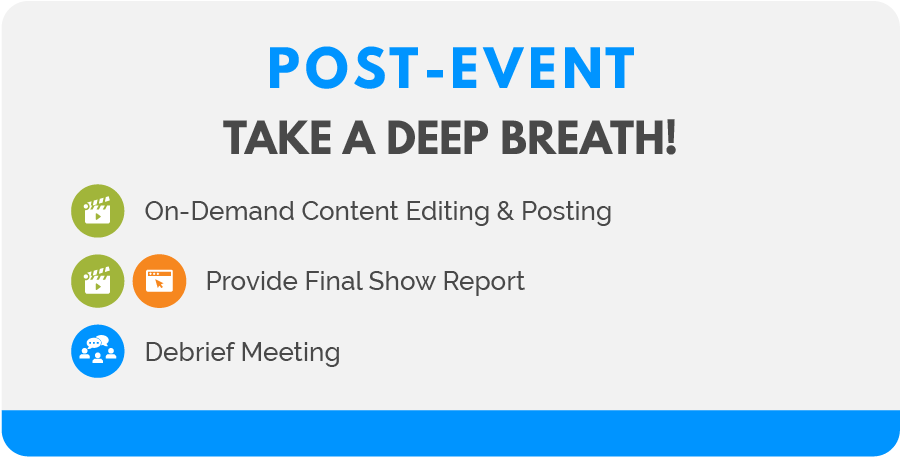
You did it! Your event has ended – time to take a deep breath and be proud of what you accomplished in this new world of virtual. Here are some last steps to consider to get the most out of your online meeting and gather the learnings to help make your next one an even bigger success.
- On-demand content editing & posting: We all know one of the most common questions at any event is: “Will you be sending out the slides/recording?” Luckily, this is much easier to achieve in a virtual world since everything was already delivered on-screen. Once the event has wrapped, make any necessary edits to the recordings and either post the on-demand versions on your platform or send the recordings out, whatever option makes the most sense with your resources.
- Provide final show report: Gather the data and metrics you determined would define the success of your event in Phase 1 and see how it performed against your desired benchmarks. The data provided may vary by the platform you use and its reporting capabilities, but it’s important to export as many stats as possible to be able to analyze performance.
- Debrief meeting: Take the time to bring all stakeholders together to review the numbers and overall success of the event, as well as specific wins and opportunities for improvement in the future. This will help to continue to refine your virtual event strategy and make your next event even better.
The Complete Picture: Your Virtual Event Planning Roadmap
As you can see, planning a virtual event takes just as much time as an in-person engagement. From defining your event goals to going live with your meeting, the process should take roughly 15 weeks or longer. For your convenience, here is the complete picture of the virtual event planning cycle:

We’re Here to Help at Every Step!
Our seasoned team of virtual event producers can partner with you from start to finish and take the anxieties out of the 15+ week planning process. From helping conceptualize and design your event theme to delivering a seamless broadcast, we’re here to help at every step of your virtual event to make it a success.
See examples of how we’ve helped our clients produce their virtual events here.
We’d love to work with you, too. Contact us today to start exploring the potential of your meeting and for more tips and best practices for delivering a successful virtual experience!


